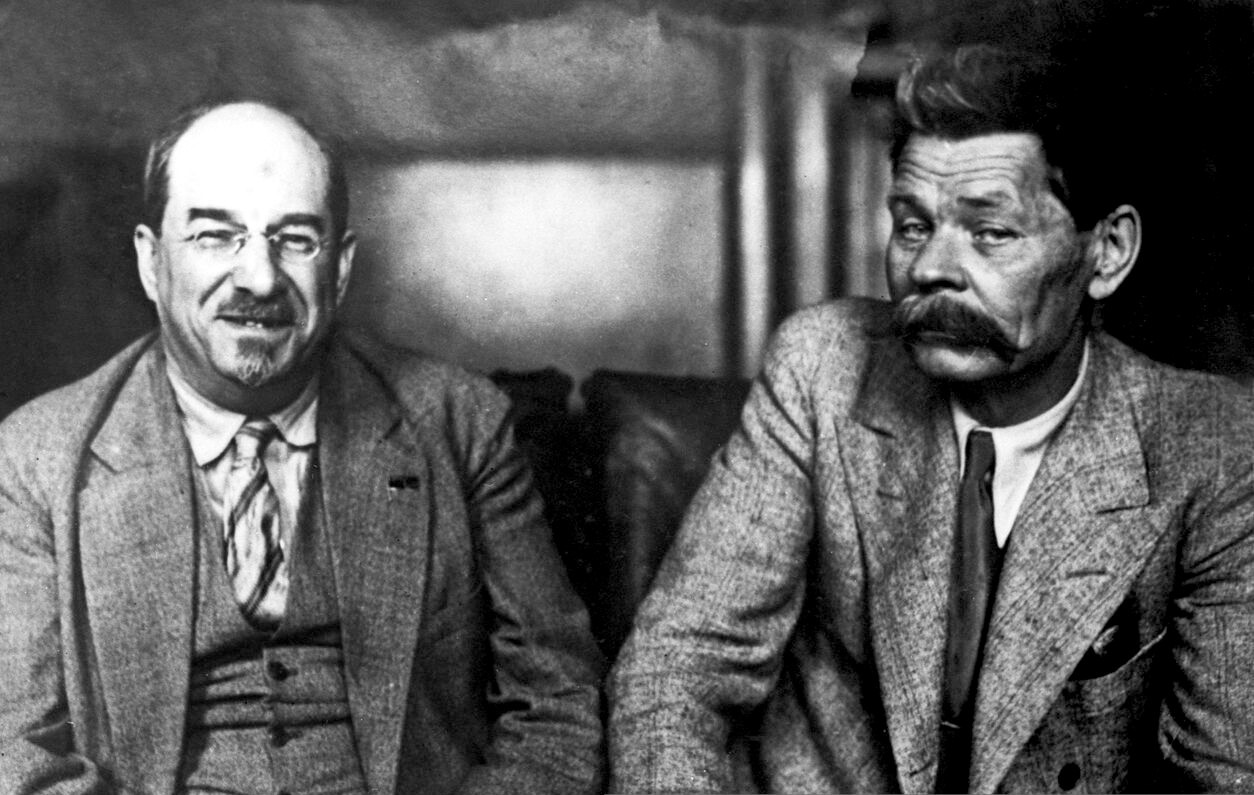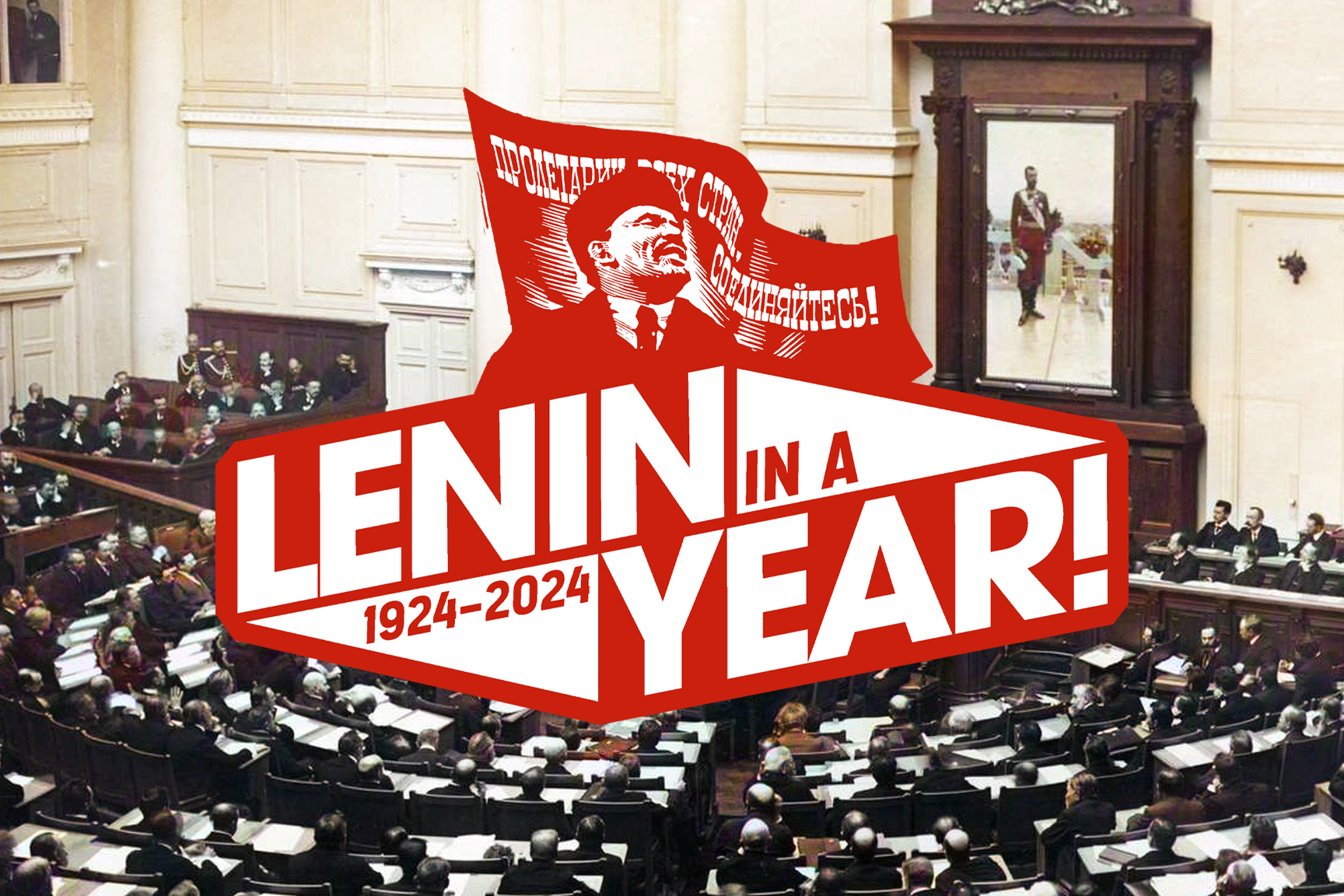This week in Lenin in a Year, we look at one of Lenin’s less well known writings, a major polemic against a trend that Marxists usually refer to as ‘ultraleftism’. The Faction of Supporters of Otzovism and God-Building was written in 1909, and it took up key questions of Marxist tactics and philosophy that an unprincipled ultraleft clique within the Bolshevik faction was seeking to revise.
The 1905 Revolution had shaken the Tsarist regime to its foundation. With the benefit of hindsight, it is clear that the December insurrection in Moscow was the high water mark of the movement. But whilst the movement thereafter generally receded in the two capitals, in the provinces it was only beginning, and continued to rise throughout 1906.
Lenin was least of all inclined to issue a death certificate for the revolution. But by 1907, the tide was clearly ebbing, and by 1909 counter-revolution was in full swing. It was necessary for the Marxists to assess the situation soberly.
The workers and peasants had their heads down. Punitive expeditions were sent to the villages. Thousands were imprisoned and thousands more executed. The noose gained a new nickname: “Stolypin’s necktie”, named after Tsar Nicholas’ new Prime Minister.
The mood darkened across Russia. Pessimism and apathy replaced revolutionary optimism, and workers and peasants abandoned the collective struggle in droves. In its place, they sought individual escape in entertainment, alcohol, and what Lenin called the “spiritual booze” of religion and fashionable cults.
The party was also affected by these moods of mysticism and philosophical reaction. This was the context in which Bogdanov released his work, Empiriomonism, promoting the trendy idealist philosophies of two European scientists, Ernst Mach and Richard Avenarius.
Alongside this, there even emerged a craze for so-called ‘God-building’ inside the party. Lunacharsky and Gorky were particularly enthusiastic about this new fashion, and they pursued it with élan from the island of Capri, near the Gulf of Naples, where they took up exile along with Bogdanov.
 Lunacharsky and Gorky were particularly enthusiastic about 'God-building' / Image: public domain
Lunacharsky and Gorky were particularly enthusiastic about 'God-building' / Image: public domain
According to the ‘God-builders’, the Marxists had to adapt to the tide of mystical garbage flooding Russia, and seek to build a kind of religion based on secular or agnostic principles of ‘love of humanity’ and ‘universal brotherhood’, as opposed to theistic religious cults then sprouting like mushrooms. But it remained merely a ‘secularised’ version of the same spiritual booze.
In every period of reaction, there can be found so-called ‘Marxists’ who wish to marry Marxism with the tide of alien class ideas then sweeping the movement. Some sincerely believe this is the only way to win others over and break the isolation of the Marxists. But however sincere its representatives may be, this trend always serves as an ideological bridge for those seeking to abandon Marxism entirely.
Struggle against such trends therefore becomes a question of survival for the movement. It was for that reason that Lenin decided to take up cudgels against Bogdanov in his 1909 masterpiece, Materialism and Empirio-criticism, as well as works like The Faction of Supporters of Otzovism and God-Building.
The ‘otzovists’
Factionally linked to this philosophical current, against which Lenin also took up cudgels, was a group of Bolsheviks known as the otzovists, who were pushing an ultra-left tactical line.
In the period of reaction, an orderly retreat was necessary. The party had to maintain its ranks intact as far as possible – ideologically and physically. The party ranks had been swelled by a new influx of workers in 1905-06. Now they were thinned by demoralisation and arrests.
Entire local party organisations were broken up by the secret police. The leaders, once more in exile, were able to maintain precious few contacts with the Russian interior. Many exiles succumbed to isolation and demoralisation.
It was in these toughest of circumstances that a sharp tactical turn was imposed on the party.
In 1905-06 – the years of revolutionary offensive – the Bolsheviks focussed on preparations for an insurrection. Insurrection was on the order of the day. The task was now to train workers in the use of firearms, in preparation for a showdown with Tsarism. In this context, the Bolsheviks correctly boycotted the elections to the First Duma in 1906. The task of overthrowing Tsarist autocracy was being immediately posed. To participate in an undemocratic farce of a parliament at such time could only sow confusion. The tactic was vindicated in a little over two months, when the First Duma was ignominiously dissolved by the Tsar.
But by 1907, things had changed. The Bolsheviks had to drop any perspective of an insurrection. It simply was not on the cards. Lenin insisted that the Bolsheviks begin distancing themselves from the armed groups that had sprung up in the previous period. When the masses surged forward, armed detachments of workers served as the sharp edge of the revolution. But to the extent that those armed groups carried on a life detached from the masses after those conditions had passed, they now degenerated into adventurism and criminality.
Rather than preparations for insurrection, a return to patient propaganda and agitation was on the order of the day. Any avenue that remained open in the stifling atmosphere of Stolypin’s Russia had to be exploited by the party to reach the workers. That included participation in elections to the Duma in 1907, which the party had previously boycotted; alongside patient work in what legal workers’ organisations existed. This was not because any change at all could be expected from such toothless, reactionary parliaments, but because having deputies within them would give the Marxists a rare platform with an enormous audience, from which they could agitate and prepare consciousness for a new revolutionary upsurge.
 What existed at Capri was not at all a school, but a secret factional centre / Image: public domain
What existed at Capri was not at all a school, but a secret factional centre / Image: public domain
But others in the party were stuck repeating the same old phrases, learned by rote, from the revolutionary days that had now passed. The otzovist (‘recallist’) faction as it came to be known stood for recalling the Social-Democratic Duma deputies and boycotting the elections. The otzovists included Bogdanov, who claimed that in conditions of encroaching reaction, the party could not “carry out a big and spectacular election campaign, nor obtain worth-while parliamentary representation.” Instead he urged the party… to continue training armed groups and infiltrating the Tsarist armed forces!
As Lenin put it in The Faction of Supporters of Otzovism and God-Building:
“The highest forms of struggle, which have never anywhere in the world succeeded without a direct onslaught of the masses, are put in the forefront and recommended as “feasible” at a time of acute reaction, while the lower forms of struggle, which presuppose not so much a direct breach of the law by mass struggle as utilisation of the law for the purpose of propaganda and agitation, preparing the minds of the masses for struggle, are declared “unfeasible”!!”
What Bogdanov proposed sounded very radical – but it was empty rhetoric that had ceased to bear any relation with reality. This was the empty noise of a petty bourgeois who had learned nothing from the proletarian party “but a few texts and “striking” slogans learned by heart”.
In the middle of 1909 – from their exile on the remote Mediterranean island of Capri far from other centres of exile activity, such as Paris where Lenin was based – Bogdanov, Luncharasky and Gorky established what they innocuously called a ‘Party School’. Under the party banner, they brought workers from Russia to educate them, not in the ideas of the party, but in their disparate ideas of otzovism, empiriomonism and ‘God-building’. In reality, what existed at Capri was not at all a school, but a secret factional centre.
With the foundation of this ‘school’, Bogdanov trampled party democracy. Like all petty-bourgeois individualists, he asserted his right to say whatever he wanted in the name of the party. He placed this right far above the right of the mass of party members to democratically hold individuals to account, and to determine what is said in its name. As a result, he was expelled first from the editorial board of Proletary, then from the Bolshevik faction entirely.
Ultra-leftism and idealism
Bogdanov was very keen to avoid being labelled an otzovist, and Gorky and Lunacharsky were keen to evade being called ‘God-builders’, but neither would give up their factionalism. In essence, despite their protests, they represented an idealist and ultra-left trend.
The otzovist ideas that Lenin fought in 1909 were a species of ultra-left sectarianism, arguments against which he would brilliantly take up once more in his 1920 pamphlet, “Left-Wing” Communism: an Infantile Disorder.
What we see every time these ultra-left sectarian trends appear, are the same recurring features. Instead of a thorough-going analysis of reality, teasing out the content of phenomena as they objectively exist, the sectarian takes only outward forms. “This is a bourgeois parliament, therefore we cannot have anything to do with it”; “this is a reactionary trade union, therefore we cannot work within it”; “our task is the overthrow of Tsarism, therefore we must launch an immediate offensive”. Reality is made to fit into a preconceived schema. Rather than dealing with what is (however unpalatable it may be at times), the sectarian deals only with what should be. Our actions proceed from a schema. In short, the method of sectarianism is formalist and idealist, much like the philosophical ideas of Mach, from which Bogdanov took his inspiration.
Inside Russia, there was natural resistance from many Bolsheviks to participation in the Duma elections. These were class fighters who hoped against hope that a struggle to the end against Tsarism may yet be on the agenda. Many therefore inclined towards sympathy for the otzovist call for a boycott, and Bogdanov’s clique tried to exert its influence over them, enticing them to their school.
But experience quickly taught the party workers inside Russia that there was no realistic prospect of an immediate, final struggle against Tsarism. Lenin was proven correct and his ideas won the day. Even in Bogdanov’s factional school at Capri, half of the attendees were soon up in arms, protesting that they were hoodwinked and that the school was preaching ideas utterly antithetical to the party’s position.
The struggle against otzovism thus represented an important chapter in the history of Bolshevism, out of which the party cadres learned important lessons, and from which Lenin’s political authority was enhanced in their eyes.
Next week, we will take a look at a short text by Lenin, written in 1913, which to this day remains a classic for all comrades seeking to understand the origins of Marxism: The Three Sources and Three Component Parts of Marxism.


